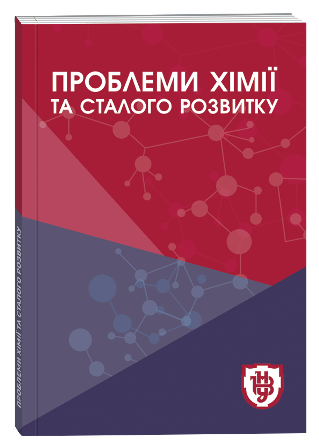MINING WASTE USING AS AN ALTERNATIVE RAW MATERIAL IN CONSTRUCTION
DOI:
https://doi.org/10.32782/pcsd-2023-1-4Keywords:
sustainable development, mining waste management, construction industry, construction mixtures, environmental safetyAbstract
Rapid industrial development and significant amounts of waste generated over the past decades have increased the need to combine economic growth with sustainable development and environmental protection. Over the past ten years, the share of industrial waste utilization was 27-34%. The high level of waste generation and low indicators of its reuse have led to the fact that significant volumes of solid waste are accumulated in Ukraine every year. This is a huge resource stock in terms of its scale. Over the past century, the extraction of ore materials and mining and chemical raw materials has increased 27 times, the extraction of minerals for construction needs – 34 times, while the amount of biomass production has increased only 3.4 times. An increase in the demand for minerals means an increase in the development and exploitation of reserves, as well as an increase in the rate of mineral depletion in various regions. The mining industry plays a strategic role as a supplier for the rest of the industries of many basic types of raw materials for modern society. The greatest commercial and economic interest is represented by decorative rocks, which, thanks to their aesthetic, physical, mechanical and polishing characteristics, are the raw materials that gave impetus to the development of the so-called natural stone industry. In this context, at the national level, the decorative stone sector mainly consists of limestone, marble, granite and other rocks (sandstone, quartzite, etc.). When regulating mining waste management, it is necessary to proceed from the principles of the concept of sustainable development, i.e. the need to establish a balance between meeting the current economic needs of the country and its citizens and protecting the interests of future generations, including their need for a safe and healthy environment. On the basis of the conducted research, it can be stated that the reuse of waste generated during the development of quarries makes it possible to: change the comprehensive approach to production processes; reduce the need for extraction, enrichment and processing of raw materials, which leads to environmental pollution; reduce overall construction costs; create a new alternative building material.
References
Рамкова директива про управління відходами 2008/98/ЄС. URL: http://epl.org.ua/wp-content/uploads/2019/09/Ramkova-dyrektyva-presreliz.pdf.
García I. (2010). Obtención de cementos eco-eficientes a partir de residuos cerámicos como materia prima alternativa. Tesis doctoral inédita leída en la Universidad Autónoma de Madrid, Facultad de Ciencias, Departamento de Química Inorgánica. 1(1). рр. 374
Офіційний сайт Державної служби статистики України. URL: https://www.ukrstat.gov.ua/
R. Ilangovana, N. Mahendrana and K. Nagamanib (2008). Strength and durability properties of concrete containing quarry rock dust as a fine aggregate. APRN Journal pp. 20-26.
Babu K.K., Radhakrishnan R. and Nambiar E. K. K. (1997). Compressive strength of Brick Masonary with Alternative- Aggregate Mortar. CE and CR journal, New Delhi. pp. 25-29.
Sahu A.K., Sunil Kumar and Sachan A.K. (2003). Quarry dust Waste as a Fine aggregate for concrete. The Indian Journal. Pp. 845-848. Green Concrete: Using Industrial Waste www.ijesi.org/7. Pravin Kumar, Kaushik S.K. (2005). SCC with crusher sludge, fly ash and micro silica. The Indian Concrete Journal, 79(8):32-37, August
Sumit A Balwaik, S.P. Raut. (2022). Utilization of Waste Paper Pulp by Partial Replacement of Cement in Concrete. International Journal of Engineering Research and Application. Vol 1, issue2, pp. 300-309.
Valeria Corinaldesi, Giacomo Moriconi and Tarun R. Naik. (2005). Characterization of marble powder for its use in mortar and concrete. NMET/ACE International Symposium on Sustainable Development of Cement and Concrete, October 5-7, Toronto, CANADA.
Salih Yazicioglu. (2005). Physico-chemical treatment of marble processing wastewater and recycling of its sludge. Materials Science and Engineering, Turkey. 419(1-2):306-309.
Sarbjeet Singh, Ravindra Nagar, Vinay Agrawal, Aditya Rana, Anshuman Tiwari. (2016). Sustainable utilization of granite cutting waste in high strength concrete. Journal of Cleaner Production, Volume 116, 10, Pages 223-235.
G. Medina, I.F. Sáez del Bosque, M. Frías, M.I. Sánchez de Rojas, C. Medina. (2017). Granite quarry waste as a future eco-efficient supplementary cementitious material (SCM): Scientific and technical considerations. Journal of Cleaner Production, Volume 148, 1, рр. 467-476.
Ali A. Aliabdo, Abd Elmoaty M. Abd Elmoaty, Esraa M. Auda. (2014). Re-use of waste marble dust in the production of cement and concrete. Construction and Building Materials Volume 50, 15. рр. 28-41.
M. Sahul Hameed and A.S.S. Sekar. Properties of Green concrete containing Quarry dust and Marble sludge Powder as a aggregate. APRN Journal pp. 83-89.
Kotsiuba, I., Herasymchuk, O., Shamrai, V., Lukianova, V., Anpilova, Y., Rybak, O., Lefter, I. (2023). A Strategic Analysis of the Prerequisites for the Implementation of Waste Management at the Regional Level. Ecological Engineering & Environmental Technology, 24(1), 55-66.
Управління та рекуперація відходів: навч. посіб. / С. В. Станкевич, Л.В. Головань, Є.М. Білецький та інш. – Х.: Видавництво Іванченка І. С., 2020. – 134 с.
Котенко В.В., Башинський С.І., Піскун І.А., Цимбалюк П.П. Застосування композитних матеріалів для армування архітектурно-будівельних виробів з каменю. ВІСТІ Донецького гірничого інституту. Всеукраїнський науково-технічний журнал. 2021. Вип. № 2 (49). С. 26-36.
Башинський С.І., Котенко В.В., Скиба Г.В., Колодій М.А., Остафійчук Н.М. Удосконалення методики оцінки придатності використання будівельного піску як сировини для інших галузей промисловості. Технічна інженерія. Державний університет «Житомирська політехніка». 2020. № 1(85). С. 191-200.
Careddu, N., Siotto, G., Siotto, R. and Tilocca, C. (2013). From landfill to water, land and life: The creation of the Centre for stone materials aimed at secondary processing. Resources Policy. 38(3). pp. 258-265
Javad Torkaman, Alireza Ashori, Ali Sadr Momtazi. (2014). Using wood fiber waste, rice husk ash, and limestone powder waste as cement replacement materials for lightweight concrete blocks. Construction and Building Materials, Volume 50, 15. рр. 432-436







